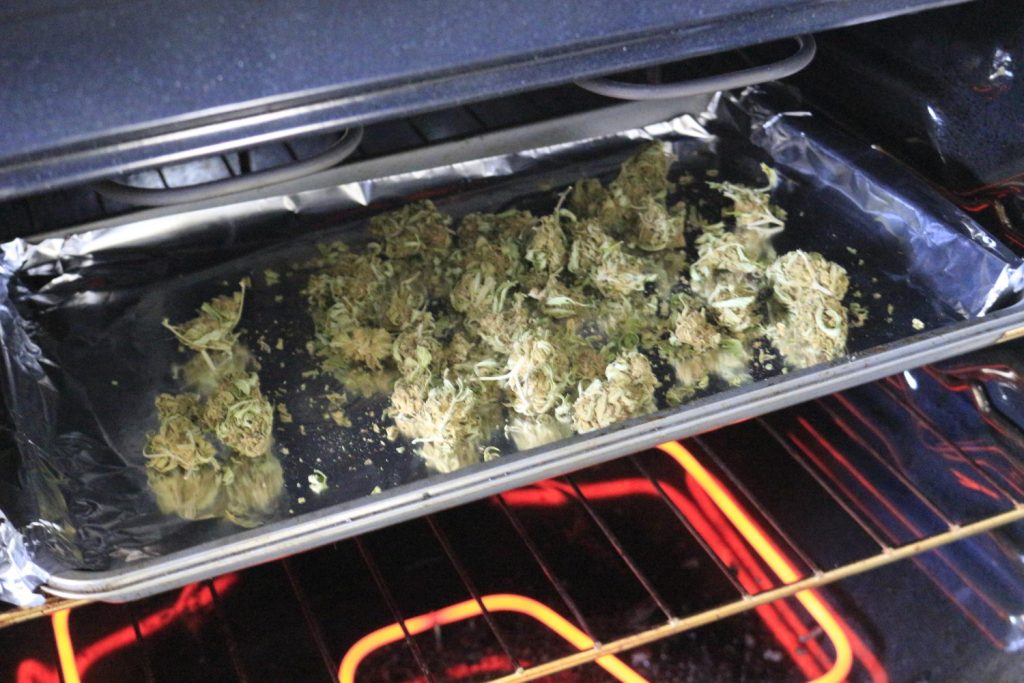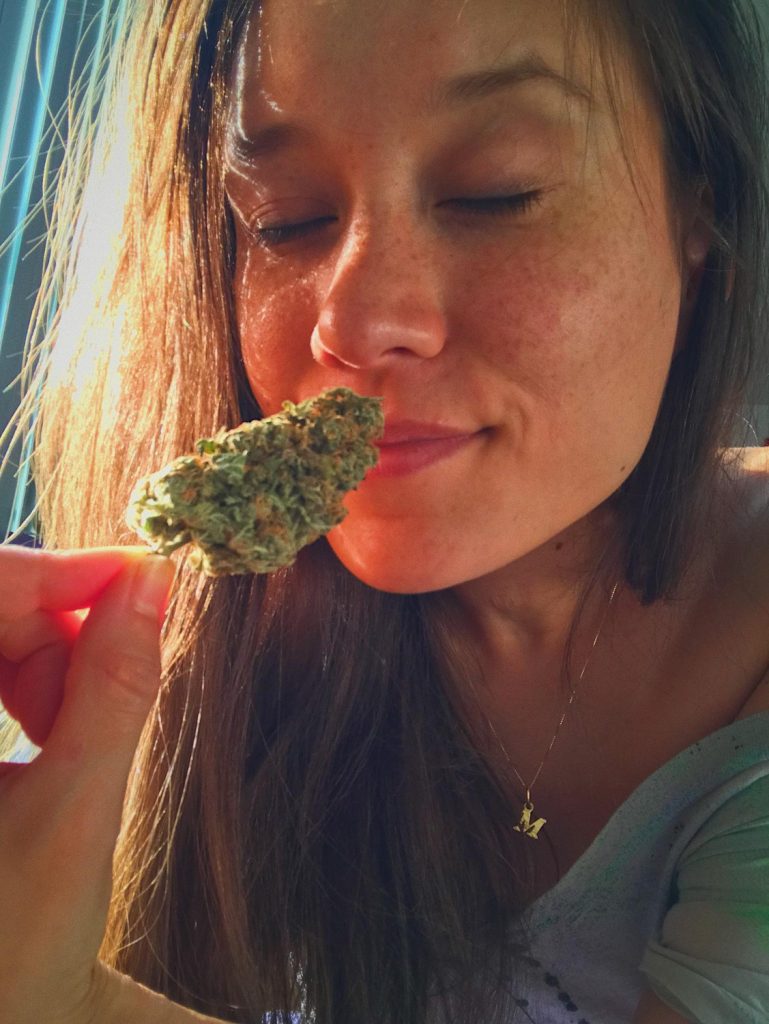What is THCA?
Does THCA get you high when smoked? The short answer, yes.
Cannabinoids are a group of naturally occurring compounds found in the cannabis plant. Among these, Tetrahydrocannabinolic acid (THCA) and Tetrahydrocannabinol (THC) are two of the most widely recognized. While THC is known for its psychoactive effects—the “high” associated with cannabis—THCA is its non-psychoactive precursor found in raw and unprocessed cannabis.
In this article, we delve into the legal distinctions and practical information regarding THCA. Particularly, we’ll explore how, despite being non-psychoactive itself, THCA can convert into THC through a process called decarboxylation when smoked, leading to psychoactive effects. Understanding these properties is crucial for consumers navigating the complex landscape of cannabis products.
THCA vs. THC
THCA (Tetrahydrocannabinolic acid) and THC (Tetrahydrocannabinol) are two cannabinoids that play significant roles within the cannabis plant. Although they are closely related chemically, their effects on the human body are distinctly different.
THCA: The Non-Psychoactive Precursor
- Chemical Structure: THCA is the acidic form of THC. In its natural state within the plant, THCA is stable and non-psychoactive, meaning it doesn’t produce a high.
- Natural Occurrence: Found primarily in fresh, undried cannabis, THCA is abundant in live plants and freshly harvested material.
THC: The Psychoactive Compound
- Chemical Transformation: When cannabis is dried and cured, THCA slowly converts to THC. However, significant conversion occurs when THCA is exposed to heat—a process known as decarboxylation.
- Effects on the Body: THC binds with receptors in the brain, producing the well-known psychoactive effects associated with cannabis use, such as euphoria and altered sensory perception.
This fundamental difference between THCA and THC—non-psychoactive versus psychoactive—plays a critical role in how cannabis products are used and regulated.

Decarboxylation: Transforming THCA into THC
Decarboxylation is a chemical reaction that removes a carboxyl group and releases carbon dioxide (CO2). This process is crucial for converting THCA into its active form, THC, which is responsible for cannabis’ psychoactive effects.
- How Decarboxylation Occurs: Decarboxylation typically happens when cannabis is heated. Common methods include smoking, vaporizing, and baking cannabis-infused products. This heating process accelerates the conversion of THCA into THC, effectively activating its psychoactive potential.
- Impact of Decarboxylation: Without this process, consuming raw cannabis—even if it’s rich in THCA—would not produce the ‘high’ associated with THC. This is why cannabis flowers are usually dried and heated in some form before use.
- Consumer Implications: It’s important for consumers to understand that any product containing THCA can potentially deliver psychoactive effects if heated. For example, a raw cannabis juice will not induce psychoactive effects, but baking with cannabis that has not been previously decarboxylated can lead to a potent THC content.
Understanding decarboxylation is key for anyone looking to achieve specific effects from cannabis products, whether seeking the benefits of THCA or the psychoactive effects of THC.

Legal Status of THCA vs. THC
The legal landscape for cannabis compounds is complex and varies significantly by jurisdiction. Understanding the legal status of THCA and THC is essential for consumers, producers, and regulators.
- THCA as Hemp: Under federal law in the United States, cannabis with less than 0.3% THC on a dry weight basis is classified as hemp. Since THCA is not psychoactive, it falls into this category as long as the converted THC does not exceed the legal threshold. This technicality means that products rich in THCA can legally be classified as hemp products, despite the potential for conversion to psychoactive THC when heated.
- Legal Thresholds and Implications: The 0.3% THC threshold does not account for the possible conversion of THCA into THC, creating a gray area in terms of potency and effects. This can lead to situations where consumers unknowingly purchase products that are non-psychoactive in their original state but can become psychoactive when decarboxylated.
- Regulatory Challenges: The potential for THCA to convert into THC poses challenges for regulators and law enforcement, as testing typically measures THC levels without accounting for the possible increase due to decarboxylation. This has implications for both the legality and use of cannabis products marketed as containing primarily THCA.
Understanding these legal nuances is crucial for anyone involved in the production, distribution, or consumption of cannabis products to ensure compliance with laws and regulations while being aware of the potential for psychoactive effects.

Effects of Using THCA Products
While THCA itself does not cause a high, its conversion to THC through decarboxylation means that products containing THCA are not always as benign as they might appear. Here are some important points for consumers to consider:
- Understanding Product Labels: Many cannabis products might list their THCA content without indicating the potential THC level once decarboxylated. Consumers need to be aware that heating these products can change their effects dramatically. Accurate labeling and consumer education are essential to avoid unexpected psychoactive experiences.
- Potential for Psychoactive Effects: If THCA is decarboxylated (through methods like baking, smoking, or vaporizing), it becomes THC, which is psychoactive. Consumers should be informed about the process and potential results of decarboxylation to make educated decisions about the use of cannabis products. For instance, a THCA tincture could be non-psychoactive when taken as is, but could produce psychoactive effects if inadvertently heated.
- Consumer Safety and Legal Risks: Depending on the region, the legal risks associated with possessing and using THC can be significant. Consumers using THCA products must consider the legal implications of the product potentially containing psychoactive THC after decarboxylation, especially in jurisdictions where THC is illegal or strictly regulated.
- Guidance for Use: It’s crucial for consumers to follow usage guidelines provided by reputable producers and consult with knowledgeable vendors or healthcare providers when uncertain about product effects. This can help mitigate risks associated with unintended decarboxylation and consumption.

